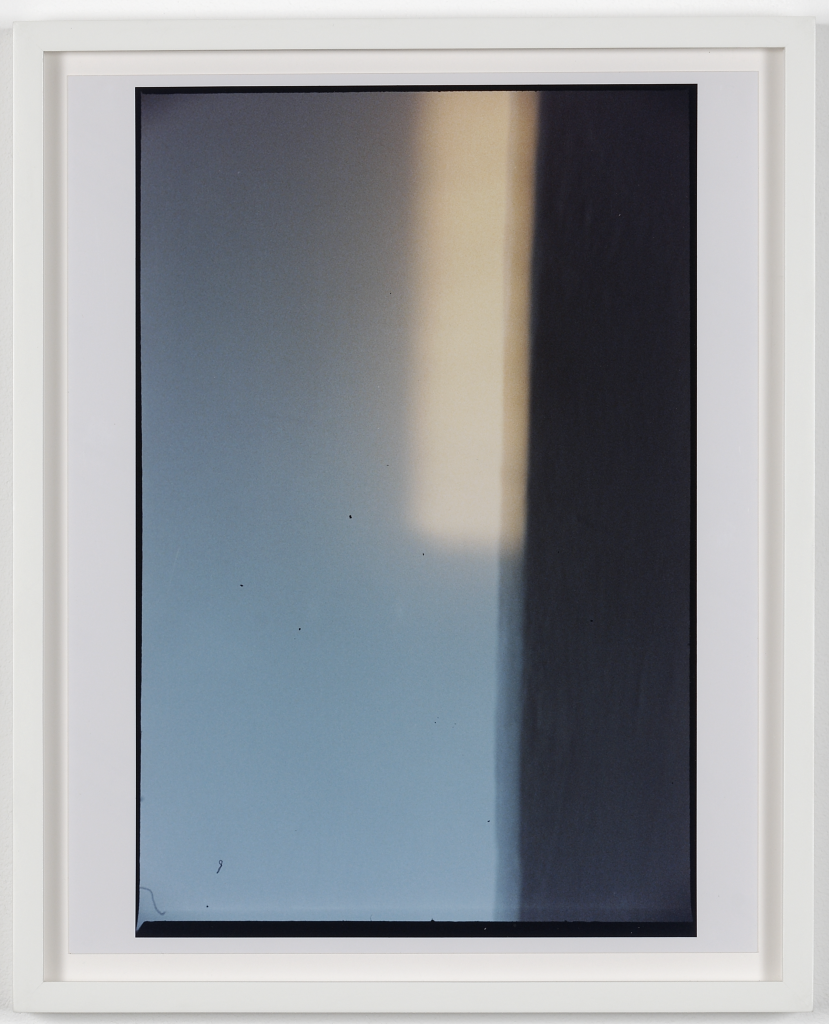Josh BrandOeuvres exist in the dark

Like many experimenters in photography, Josh Brand is amongst the new generation immersed in innovative, craft-based darkroom experimentation.
The biographical notes about photographers often reveal a childhood passion for darkrooms; in this case, Josh Brand set up such a space in his parents’ house in Pittsburgh and became immersed in its interactive darkness, spellbound by the magic of printing. The passion never abated. He describes it as his ‘darkroom habit’, and it still forms the basis of the original, experimental work that places him in an umbilical relationship with both nineteenth-century pioneers and his generation of explorers of new photographic possibilities.
Brand’s challenging collection involves a diversity of techniques, processes and media, and his subjects range from often unidentifiable objects to strangely, anonymous human portraits with the air of Maya Deren’s film characters. All are irresistibly dreamlike. Sometimes working without cameras, he creates photograms; filtering light through different media including cut and punctured sheets of plastic and card, he presents dazzlingly different abstract images.
The meditative Bed (2009) is part of a series whose title is indirectly related, says the artist, to Robert Rauschenberg’s Bed (1955), a similar subject of sleep and living. The simple, geometric abstract is constructed with sunset light landing on a bedroom wall, the dominant baby-blue interrupted by a golden strip which enters the room and helps create the perfectly harmonious balance of colour and design which recalls the art of James Turrell. Such early abstracts were in a state of constant development. The beautifully translucent sculptural piece Untitled (2009) was created by filtering light through transparent and opaque papers to produce an abstract silent beauty. Like Figurative Shape from 2011, they have subsequently been compared with Wolfgang Tillmans’ exquisite Paper Drop (2007).
Those earlier pieces led Brand to London’s Herald St gallery this year and his recent collection Nature. He strung small postcard-sized abstracts in a carefully rhythmic sequence along one wall. Surprisingly decorative, they include Untitled (2011) created to resemble an X-ray negative and evocative of a necklace of seed-like objects floating in murky pond water.
The larger (61 x 51 cm) prints of mysterious sometimes sinister, but always unidentifiable, objects are densely constructed. What began as flotsam and jetsam from the streets of New York were converted to the beautiful in Brand’s studio-cum-laboratory. Their blurred effect and dark tones lend detail, expression and depth; the images are excitingly dark and withholding, some luring us deeper into leering faces and peering eyes. The more complex processes introduce saturated dye colours and mixed media; the layering is increased by mounting more mundane bits and pieces onto undeveloped coloured paper – trapping them like insects in amber.
When Brand emerged, seemingly incongruously, onto the street he brought a dog, friends and a camera and followed the shadow of a woman, Bianca Walking (2011). The most obviously literal image features the tall stringy woman imprinted on the pavement and, mystifyingly, also spread into a second shadow of her boots. In contrast the Ghost on Grand Street (2011) is a ghostly hound posing close to camera, its foreshortened face resembling a softly bearded, thoughtful man with one eye staring knowingly into the lens. These human and animal subjects introduce a refreshing silent-movie element into Brand’s work, reminders of his film studies.
Like many experimenters in photography, Josh Brand is amongst the new generation immersed in innovative, craft-based darkroom experimentation. A mosaic overview of his work presents an intuitively random mind-map thriving on unpredictability.
